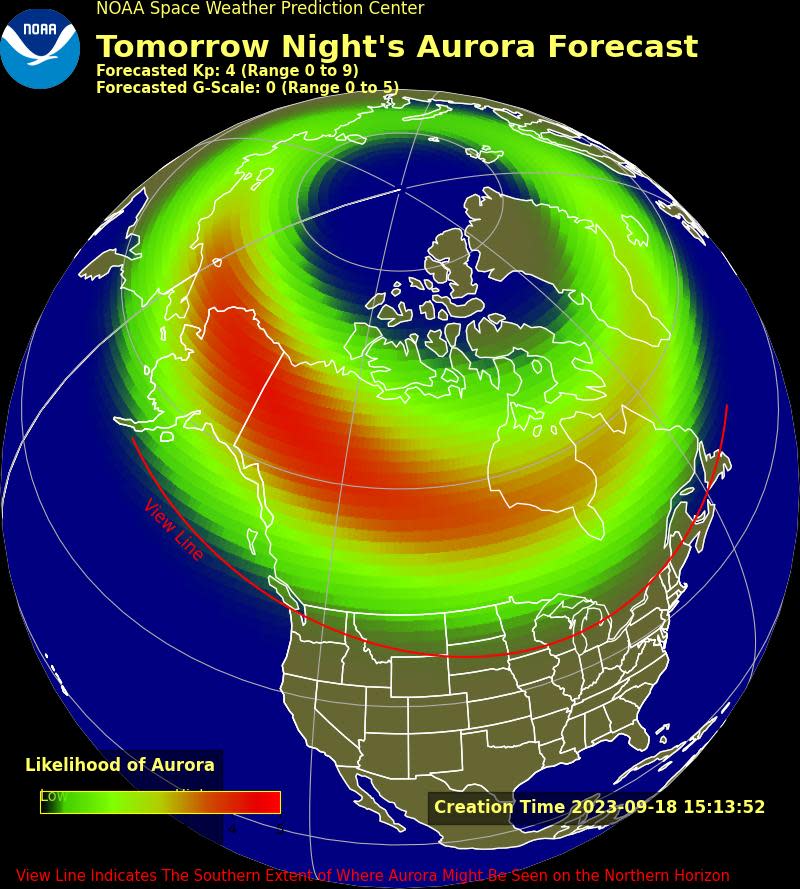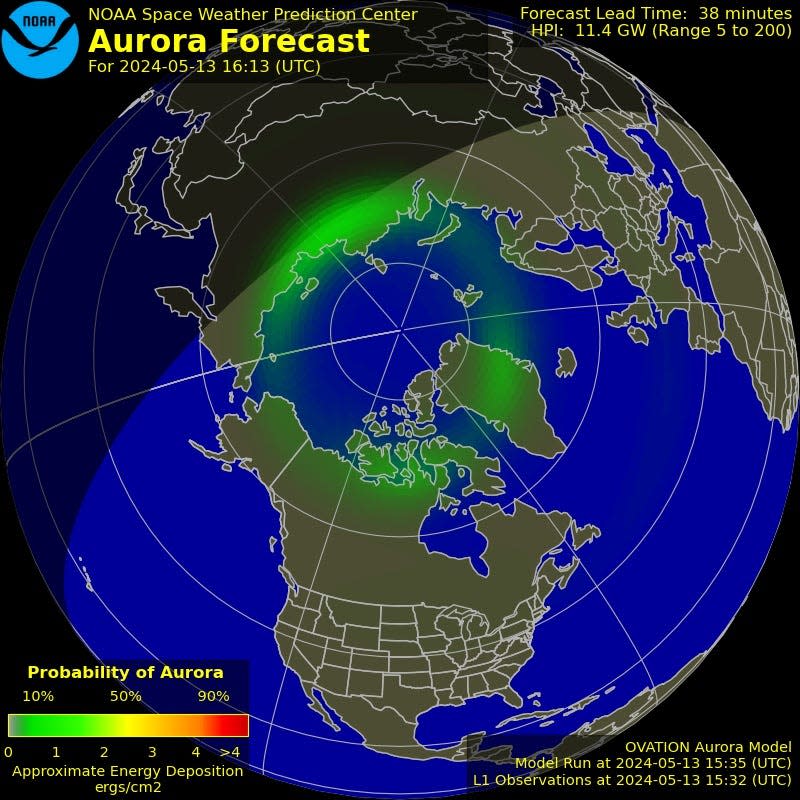Miss seeing the northern lights? Sun still 'pretty active' creating hope for more shows
If you didn't see the northern lights over the weekend, you've seen the photos on your social media feeds.
On Friday, Saturday and Sunday night, the strongest display of the northern lights in the last 20 years, according to Massachusetts Institute of Technology Technical Instructor and Observatory Manager Tim Brothers, dazzled over New England and much of the United States.
The last event this big occurred in October, 2003, according to The National Oceanic and Atmospheric Administration.
But if you didn't see them – due to cloud cover or some other reason – Brothers said there's a chance there will another display, though it all depends on the sun.
"It still seems to be pretty active," Brothers said of the conditions that cause the northern lights, or the aurora, as it is called. "I'm hoping we can see it again."

What causes the northern lights?
Northern lights, also known as the aurora borealis, are caused by the sun.
"The northern lights are created when energized particles from the sun slam into Earth's upper atmosphere at speeds of up to 45 million mph but our planet's magnetic field protects us from energetic assault," according to Space.com. "As Earth's magnetic field redirects the particles toward the poles the dramatic process transforms into a cinematic atmospheric phenomenon that dazzles and fascinates scientists and sky-watchers alike."
Brothers explained, "It's the ejection of material from the sun that causes this reaction. It just so happens that this is the biggest reaction we've had in 20 years."
Why are the northern lights so active?
The sun goes through phases on an 11-year solar cycle. Right now, it's nearing the peak of that cycle, known as "solar maximum." During this moment, the sun emits more solar flares and coronal mass ejections, massive bubbles of plasma threaded by rejected magnetic field lines.
The result is that the northern lights can happen more frequently and cover bigger swaths.
Why is it easier to see the northern lights these days?
Beyond the lights being more active, we also have better technology.
Brothers noted that the northern lights can be seen better because we "have better phone cameras" and other ways of seeing such displays.
He added that he has some advice for those using their phones to see, and take photos of the northern lights.
"On Friday night I had good luck with my Google Pixel phone, set to 'Night Sight,'" Brothers said. "Focus at 'Far' and save images as RAW. If you prop your phone against something steady or attach it to a tripod, it should switch to 'astrophotography' mode. Just be sure not to bump it while it is taking the long images. The cool part about this mode is you get up to a four-minute exposure, which results in a RAW photo with more faint details, as well as a time-lapse movie.
"Apple phones have a similar nighttime photography mode. I was also happy with the images I took with a Canon DSLR using a wide angle or a fisheye lens, ISO 1600 and 3-20 seconds."
Who saw this round of northern lights?
USA Today stated that the northern lights could be seen in New England, "the Midwest, the Upper Plains, and the Pacific Northwest regions." The passage added that streaks of light may be could be seen as far South as Iowa and Nebraska.
"I knew people who saw it as far south as Tennessee and Alabama," Brothers added.

Places to check for northern lights forecast
If you want a chance at seeing the northern lights, here are some websites you can monitor the sun's activity:
Brothers noted that to have the best chance of seeing the northern lights, it would be a good idea to check these websites on a daily basis.
What are the effects of these solar flares?
"The ejection of material (from the sun) can actually affect national security," Brothers explained, adding the flares can disable satellites, and even power-grids on earth.
"If these (flares) are strong enough, they could cause satellites to just die," Brothers said. "As far as I know, everything is OK after last weekend, but it's definitely something to watch."
According to NOAA, the flares can also cause the loss of:
Water and wastewater distribution systems
Perishable foods and medications
Heating/air conditioning and electrical lighting systems
Computer systems, telephone systems, and communications systems
Public transportation systems
Fuel distribution systems and fuel pipelines
This article originally appeared on wickedlocal.com: Northern lights 2024: 'Pretty active' sun creates hope for more shows

